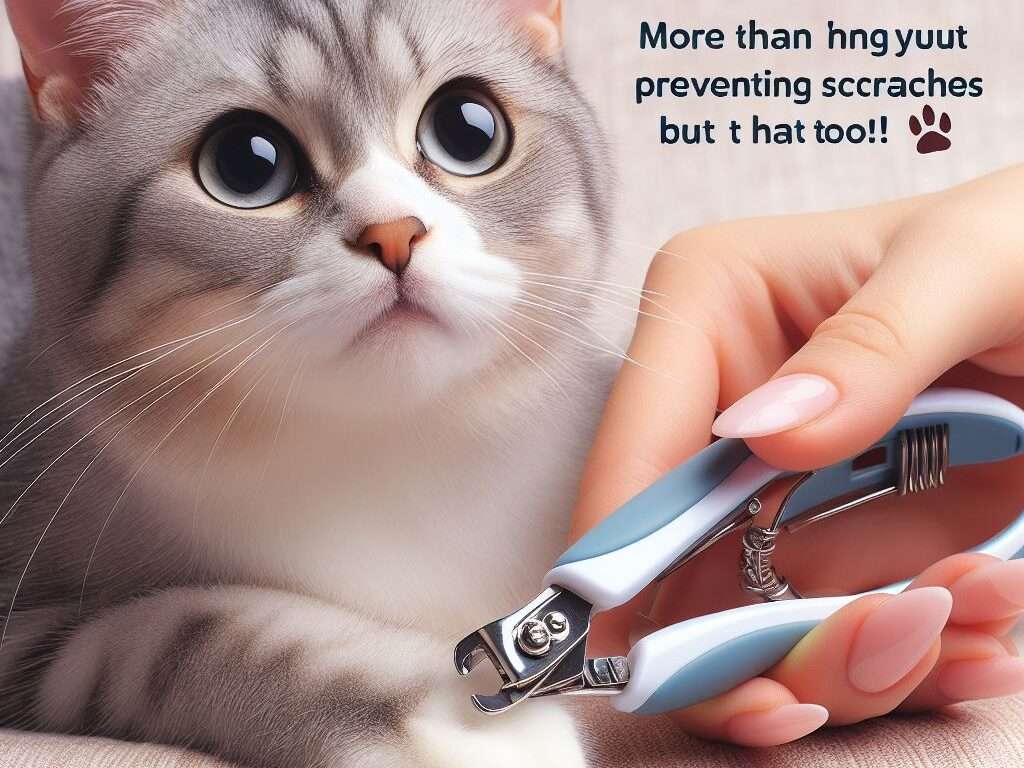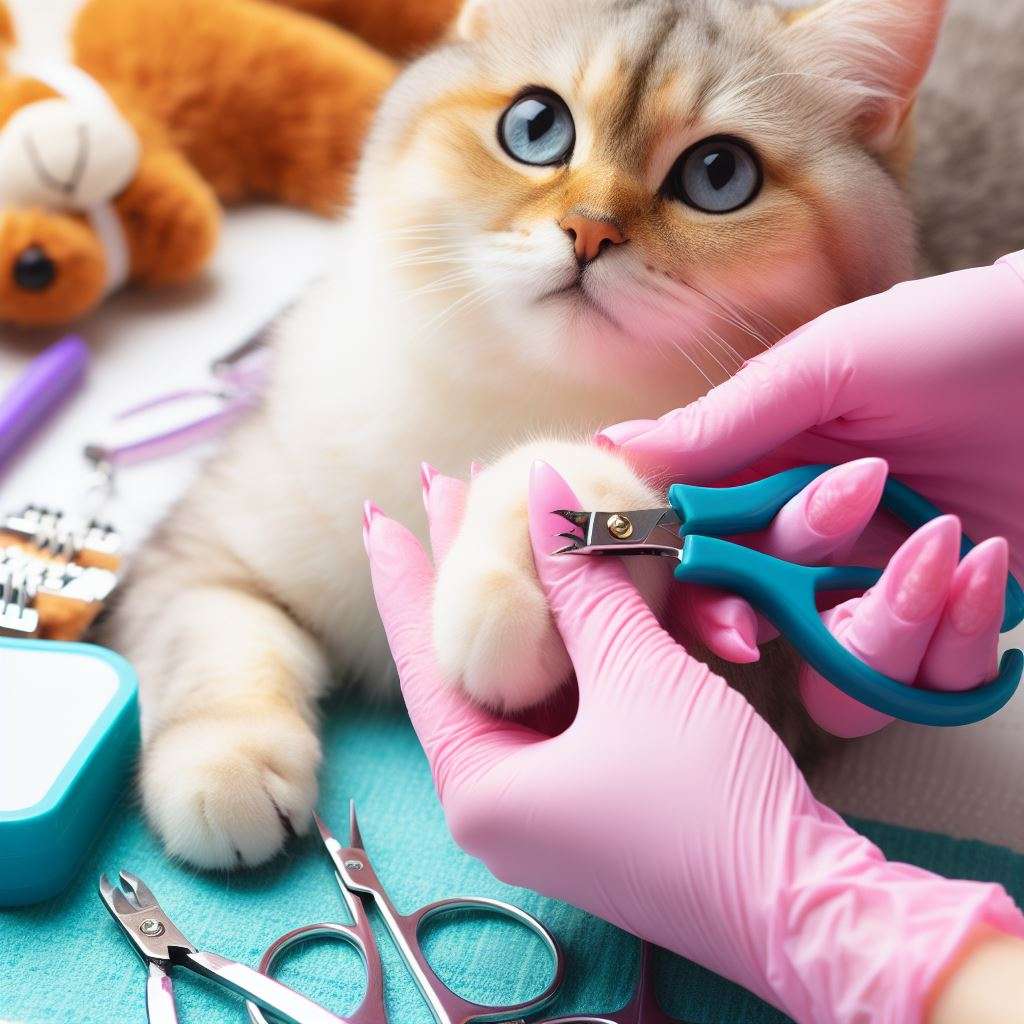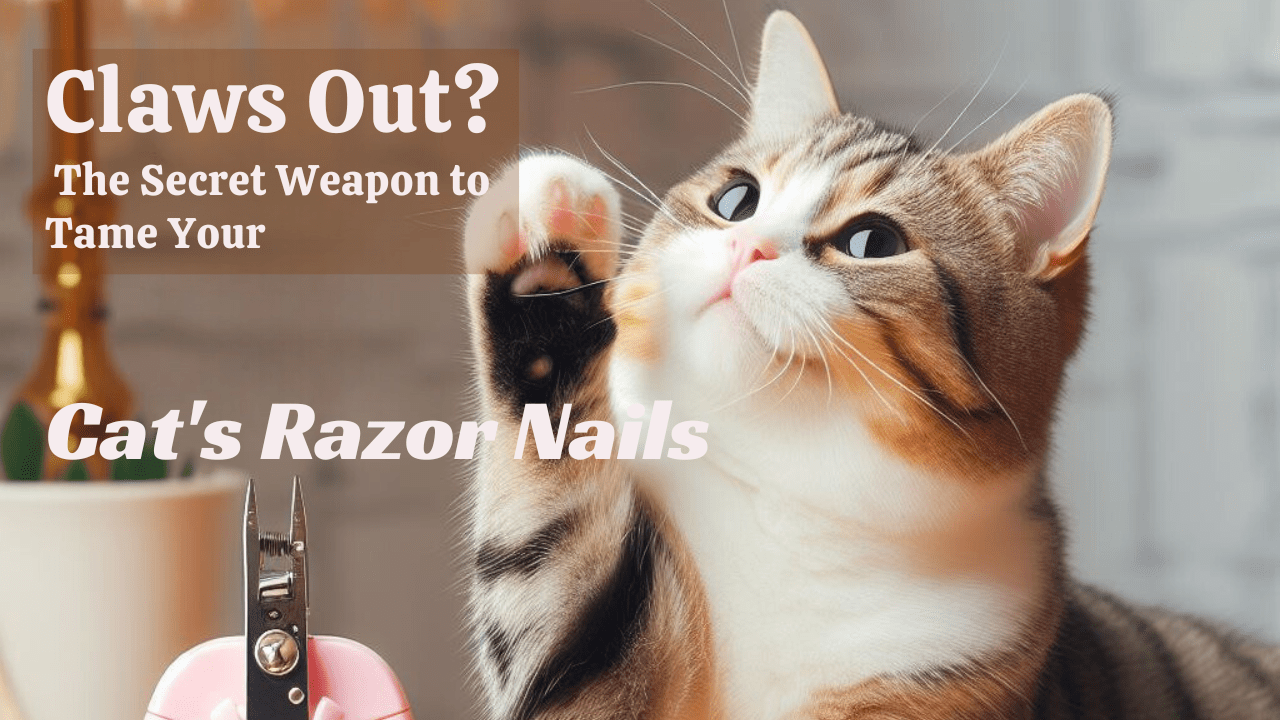Contrary to popular belief, trimming your cat’s nails isn’t just about saving your furniture from a shredding frenzy. While scratched couches and ripped curtains are certainly an annoying consequence of overgrown claws, regular nail trims offer a wealth of benefits for your feline friend.
Think about it this way: imagine your nails constantly clicking against the floor with every step. It wouldn’t be comfortable, right? Overgrown claws can be painful and uncomfortable for cats, making it difficult for them to walk, climb, and even use the litter box properly. This discomfort can lead to frustration, behavioral issues, and even injuries.
But the good news is, preventing these problems is as simple as including regular nail trims in your cat’s care routine. By keeping their claws healthy and manageable, you’ll be ensuring not only the safety of your furniture but also the comfort and well-being of your furry companion.
Now, let’s delve into the nitty-gritty of cat claws and the telltale signs that it’s time for a trim. Buckle up, cat parents, we’re about to embark on a journey to understanding your cat’s paws better!

Choosing the Perfect Clippers: A Guide to Cat Nail Trimming Tools
Forget the one-size-fits-all approach! When it comes to cat nail clippers, the key to a stress-free (and successful) trim lies in choosing the right tool for your feline friend. Just like humans have different preferences for scissors or nail clippers, cats have individual needs when it comes to their paw-dicures.
There are three main types of cat nail clippers available:
Scissor-style clippers: These resemble regular nail clippers and offer good control for experienced cat parents. However, they may not be suitable for cats who are easily startled or have thick nails.
Guillotine-style clippers: These clippers feature a hole where the claw is inserted, and a blade that comes down to trim the tip. They can be easier to use for beginners, but choosing the right hole size is crucial to avoid cutting the quick, the sensitive part of the claw.
Grinders: These battery-powered tools gently grind down the nail instead of clipping it. They can be a good option for cats who are particularly sensitive or have black nails where the quick is harder to see.
Now, let’s explore the factors to consider when selecting the ideal clippers for your cat:
- Your cat’s temperament: If your cat is easily stressed or anxious, opt for guillotine clippers or grinders, which offer more control and may be less intimidating.
- Your experience level: Scissor-style clippers require more precision and may be better suited for experienced cat parents.
- Your cat’s nail thickness: For thick nails, consider guillotine clippers with a larger hole size or even grinders.
- Your cat’s claw color: If your cat has black nails, where the quick is harder to see, grinders offer a safer alternative.

Prepping for Paw some Nail Trims: Setting the Stage for Success
Nail trim day doesn’t have to be a battle of wills! By preparing the right environment and gathering essential supplies, you can set yourself and your cat up for a smooth and successful experience.
Gather your paw some team:
- Sharp cat nail clippers: Choose the type that best suits you and your cat (refer to the previous section for guidance!).
- Treats: Stock up on your cat’s favorite treats to reward them for good behavior throughout the process.
- A distraction toy: A feather wand or ball can help keep your cat occupied and focused while you trim their nails.
- Styptic powder (optional): This powder helps stop minor bleeding if you accidentally nick the quick.
Create a calm and comfortable space:
- Choose a well-lit and quiet location with minimal distractions.
- Lay a comfortable towel or blanket on your lap or a table where you’ll be trimming.
- Consider having a helper present to gently hold your cat if needed.
Optional tip for anxious felines:
If your cat is particularly stressed about nail trims, consider introducing calming techniques like:
- Feliway spray: This spray releases pheromones that can help reduce anxiety in cats.
- Gentle petting and soothing voice: Talk to your cat in a calm and reassuring voice while gently petting them.
- Desensitization: Gradually introduce the sight and sound of the clippers by letting your cat sniff them while offering treats.
Remember: Patience is key! If your cat becomes too stressed, don’t force it. Take a break and try again another time.

Mastering the Maneuver: A Step-by-Step Guide to Trimming Your Cat’s Nails
Now that you’re prepped and ready, let’s dive into the actual nail trimming process!
Secure your cat:
- Gently but firmly wrap your cat in a towel or blanket, leaving one paw exposed at a time. This helps keep them calm and prevents them from scratching or squirming.
- Alternatively, have your helper gently hold your cat while you trim their nails.
Locate the quick:
- The quick is the pink part of the claw that contains nerves and blood vessels. It’s crucial to avoid cutting this area, as it can cause pain and bleeding.
Clip only the tip:
- Using your chosen clippers, hold the claw firmly and make a clean, sharp cut to the tip of the claw, avoiding the quick.
- If you’re unsure where to cut, it’s always better to err on the side of caution and take off a smaller piece.
Repeat for all paws:
- Repeat steps 1-3 for each of your cat’s paws.
- Take breaks and offer treats throughout the process to keep your cat calm and cooperative.
Reward and praise:
- After finishing the nail trim, shower your cat with praise and treats to reinforce positive behavior.
Optional tip:
If you accidentally nick the quick and it starts bleeding, apply a small amount of styptic powder to the tip of the claw to stop the bleeding. However, if the bleeding is excessive or doesn’t stop, consult your veterinarian.
Remember, practice makes perfects! With a little patience and these helpful tips, you’ll be a pro at trimming your cat’s nails in no time.
Post-Trim Pampering and Wrapping Up
Nail trims are a necessary part of cat care, but that doesn’t mean they have to be a stressful experience for you or your feline friend. Following up with some TLC can reinforce positive associations and make the entire process more enjoyable for everyone involved.
Shower your cat with love and appreciation:
After the successful nail trim, shower your cat with plenty of praise, cuddles, and their favorite treats.
This positive reinforcement helps them associate nail trims with something pleasant, making future sessions potentially smoother.
Clean and store your clippers:
Wipe down your cat nail clippers with a disinfectant wipe or rubbing alcohol to remove any hair or debris.
Store them in a safe place, out of reach of children and pets.
Monitor your cat’s paws:
Keep an eye on your cat’s paws after the trim. Any redness, swelling, or persistent bleeding could indicate an infection or accidental injury.
If you notice any concerns, consult your veterinarian.
Conclusion: Clawsome Companionship Awaits
By incorporating regular nail trims into your cat’s care routine, you’re not just protecting your furniture from unwanted scratches, but also ensuring your feline friend’s comfort and well-being. Remember, a little preparation, the right tools, and a whole lot of patience go a long way in making nail trims a positive experience for both you and your cat.
Share your favorite tips and tricks for successful cat nail trims in the comments below!
Subscribe to our blog for more informative and helpful articles on all things cat care!



